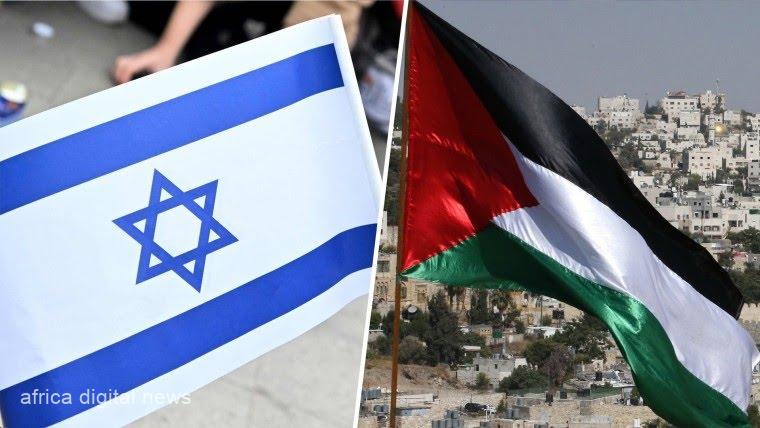The Middle East, often depicted as a mosaic of intertwined histories, religions, and cultures, has been a focal point of global attention for its geopolitical importance and the myriad conflicts that have plagued the region. Among its numerous flashpoints, the Israel-Gaza conflict emerges as particularly poignant, not just because of its longevity but due to its intricate web of sociopolitical and territorial complexities.
At the heart of this conflict lies a juxtaposition of two narratives, each deeply rooted in historical legitimacy and national identity. From the crumbling vestiges of the Ottoman Empire to the influential Balfour Declaration of 1917, the landscape of modern Israel and Palestine was shaped by a confluence of regional and global forces. The post-World War II era, marked by the horrors of the Holocaust and the consequential significant migration of Jewish populations to Palestine, added fuel to an already simmering cauldron of nationalist movements.
The subsequent declaration of the State of Israel in 1948, while a moment of jubilation for some, was a point of contention for others, leading to immediate military confrontations with neighboring Arab nations.
Gaza, with its unique history and strategic location along the Mediterranean, presents a microcosm of the broader Israel-Palestine conflict. Once under Egyptian administrative control and later occupied by Israel, its narrative took a significant turn with Israel’s unilateral disengagement in 2005. The rise of Hamas in Gaza further complicated matters, introducing new dynamics to an already multifaceted dispute.
Yet, beyond the political and territorial skirmishes, the real implications of this conflict are felt by the common people, whose lives are punctuated by episodes of violence, economic hardships, and an ever-present sense of uncertainty. Civilians on both sides bear the brunt of a conflict that often sees them as collateral in a larger game of power politics.
However, amidst the prevailing gloom, rays of hope emerge from various quarters. International diplomacy, grassroots initiatives, and people-to-people contact have occasionally managed to bridge divides, pointing towards the possibility of a more harmonious future. The path to peace is undoubtedly arduous, but with mutual respect, understanding, and a genuine desire for coexistence, a resolution, though challenging, is within reach.
Read Also: Intermittent Fasting: Unlocking Health’s Hidden Benefits
Israel-Gaza: Delving into the Root Causes
The Israel-Gaza conflict, like many geopolitical issues, has multiple layers of causation. Understanding the root causes is crucial to gain a more comprehensive view of the situation and, in turn, to work toward viable solutions. Here, we will examine four primary triggers that have exacerbated tensions over the years.
Territorial Disputes: The late 1940s were a watershed moment in the Middle East. The establishment of the State of Israel in 1948 was a historic turning point, signifying the culmination of the Zionist movement’s aspirations. However, its creation was not without its challenges. Wars that immediately followed, notably the 1948 Arab-Israeli War and the consequential Six-Day War in 1967, drastically altered the region’s territorial dynamics. As a result, areas such as Gaza, the West Bank, and East Jerusalem became central flashpoints. Each of these territories carries its own unique historical and political baggage, making their status a perennial point of contention.
Religious Significance: The city of Jerusalem stands as a beacon of religious fervor and historical importance. For Jews, it’s the home of the Western Wall, the last remnant of the Second Temple. For Muslims, the Al-Aqsa Mosque, the third holiest site in Islam, is located there. Christians too, view the city as vital, given its association with the life of Jesus Christ. The religious mosaic that is Jerusalem, while culturally rich, also becomes a source of tension. Disputes, particularly over the Al-Aqsa Mosque compound and the Temple Mount, have often been catalysts for outbreaks of violence, underscoring the city’s sensitive nature.
Blockades and Settlements: Israel’s blockade on Gaza, instituted after Hamas’s ascendance in 2007, is another significant point of contention. Aimed at weakening the Hamas group, the blockade has had multifaceted implications. While it has succeeded in restricting the flow of weapons, it has also led to dire humanitarian consequences for the Gazan population. On the West Bank front, Israeli settlements continue to be a thorny issue. These settlements, viewed by many as a violation of international law, represent not just a territorial dispute but also a challenge to the envisaged two-state solution.
Militant Actions: The cyclical nature of violence in the region often stems from a pattern of provocation and response. Rocket attacks initiated by militant groups based in Gaza and the subsequent retaliatory measures by Israel epitomise this cycle. The civilians, caught in the crossfire, face the brunt of these confrontations, further deepening animosities and mistrust.
These causes, while providing a glimpse into the conflict’s complexities, also highlight the need for concerted efforts toward peace. Recognising and addressing these triggers is a fundamental step in moving towards a more stable and harmonious future for the region.
Israel-Gaza: Unraveling the Wider Implications
The Israel-Gaza conflict, beyond its immediate geographical scope, has had far-reaching effects on various aspects ranging from humanitarian crises to global politics. The ripples of this confrontation extend well beyond the borders of Israel and Gaza. This page delves deeper into the broader ramifications, supported by pertinent facts and figures.
Humanitarian Concerns: Gaza, with a population of approximately 2 million, often faces the most severe humanitarian consequences due to the conflict and the blockade. According to the United Nations Office for the Coordination of Humanitarian Affairs (OCHA), in 2020, over half of Gaza’s population lived below the poverty line, with unemployment rates soaring to around 45%. The blockade has exacerbated these statistics, leading to significant shortages in essential goods, medicines, and fuel.
Economic Ramifications: The repeated confrontations have taken a toll on Gaza’s economy. As per the World Bank, Gaza’s GDP has shrunk dramatically over the past decade, with a contraction of 6.5% just in the first quarter of 2019. This economic distress is further intensified by the blockade, which restricts the movement of goods and people, crippling trade and investment.
Global Politics: The Israel-Gaza issue often finds itself at the epicenter of global politics. Major powers, like the U.S., Russia, China, and the EU, have been intricately involved, often leading to a polarized international response. The U.S., for instance, has consistently been one of Israel’s staunchest allies, providing them with approximately $3.8 billion in military aid annually, as per the 2016 Memorandum of Understanding.
Regional Dynamics: The Middle East, known for its intricate web of alliances and rivalries, sees the Israel-Gaza conflict as a pivotal element influencing regional dynamics. Countries like Egypt and Qatar have intermittently played mediating roles, while Iran has been a notable backer of Hamas. The intricacies of these relationships have often impacted ceasefire negotiations and peace initiatives.
Social and Psychological Impact: The constant state of conflict has left indelible marks on the psyches of both Israelis and Palestinians. Studies have shown alarming rates of Post-Traumatic Stress Disorder (PTSD) among children, particularly in Gaza. A report by Save the Children in 2018 highlighted that over 95% of children in Gaza displayed deep-seated emotional distress.
In unraveling these implications, it becomes evident that the Israel-Gaza conflict isn’t just a regional concern but a global one. The intertwined humanitarian, economic, political, and psychological facets of this issue underscore the urgency and necessity for a lasting resolution.
The Multifaceted Impact of the Israel-Gaza Conflict
The Israel-Gaza conflict, a focal point of geopolitical tensions, reverberates not just in the heart of the Middle East but across the globe. The intricate tapestry of its effects weaves through the lives of millions, impacting them economically, socially, politically, and psychologically. With the delicate touch of history interlaced with modern geopolitical intricacies, the implications of this enduring conflict are vast and far-reaching.
Economic Strains: The region, particularly Gaza, grapples with economic hardships directly linked to the ongoing confrontations. Economic activities are frequently disrupted due to skirmishes. According to the World Bank, the Gaza Strip has one of the world’s highest unemployment rates, with the youth being hit particularly hard. The economic isolation of Gaza, compounded by blockades, has shrunk its GDP, making external aid and remittances a lifeline for many.
Diplomatic Ripples: The Israel-Gaza dynamics influence diplomatic relations globally. The alignment or disagreement of nations concerning this conflict often echoes in international forums like the United Nations. Resolutions concerning the issue often draw sharp divisions, reflecting the world’s polarized stance on the matter.
Regional Realignments: The Middle East’s geopolitics sees constant flux influenced significantly by the Israel-Gaza situation. While countries like Turkey and Iran have voiced strong support for the Palestinian cause, recent times have witnessed a series of normalization agreements between Israel and Arab nations, such as the UAE and Bahrain. These Abraham Accords, brokered in 2020, underscore the evolving regional dynamics.
The Humanitarian Aspect: Perhaps the most heart-wrenching repercussion of the conflict is the humanitarian crisis, predominantly in Gaza. Continuous skirmishes have rendered many homeless, with essential infrastructure like hospitals and schools being frequently targeted. The UN has consistently flagged concerns about the deteriorating humanitarian conditions in Gaza, emphasizing shortages in essential medical supplies and clean drinking water.
A Societal Scar: Generations growing up in the shadows of this conflict bear psychological scars. The perpetual state of alertness, the trauma of losing loved ones, and the uncertainty of the future weigh heavily on the minds of countless Israelis and Palestinians. This societal strain transcends borders, as diasporas worldwide grapple with the emotional and identity complexities arising from the conflict.
Culture and Academia: The Israel-Gaza discourse prominently features in global academia and cultural expressions. Universities worldwide host debates, discussions, and courses dedicated to understanding this complex issue. Films, literature, and art, too, echo the pain, aspirations, and narratives of the people entwined in this conflict.
In drawing back and observing the vast panorama of the Israel-Gaza conflict’s implications, it is evident that its resolution (or lack thereof) will shape not just the destiny of the immediate stakeholders but potentially the course of global geopolitics, humanitarian principles, and societal constructs in the 21st century.
Paths to Peace: Navigating the Labyrinth of the Israel-Gaza Conflict
The enduring conflict between Israel and Gaza has been a point of contention and heartbreak for decades, with ripples that echo far beyond the borders of the Middle East. As the world grapples with the complexities and sensitivities of this situation, understanding the possible routes to peace becomes paramount.
Historically, moments of significant progress have arisen from direct negotiations between the involved parties. The Oslo Accords of the 1990s serve as a testament to the power of dialogue. However, for these conversations to bear fruit, they must encompass all significant stakeholders, ensuring even historically marginalized groups like Hamas are heard.
Neutral intermediation, through nations like Egypt and Norway or organizations such as the United Nations, can serve as the bridge upon which these dialogues can occur. These unbiased entities can not only facilitate the conversations but also monitor the adherence to any established agreements.
At the heart of peace efforts lies the grassroots initiatives. When ordinary Palestinians and Israelis engage in mutual activities, whether cultural, academic, or commercial, it lays down bricks of understanding and trust. Challenging the prevailing narratives of distrust through shared experiences can prove instrumental in shifting perspectives.
But dialogues and shared experiences alone cannot pave the path to peace. Concrete steps must address the root issues of the conflict: the status of Jerusalem, the rights and resettlement of Palestinian refugees, the demarcation of borders for both Israel and a prospective Palestinian state, and the mutual security concerns that have been the bedrock of many disputes.
Economic bridges have historically been tools of peace and diplomacy. When economies are intertwined, through shared industrial zones, collaborative resource management, or mutual tourism projects, they foster an interdependence that can often act as a deterrent to conflict.
The idea of a two-state solution, with Israel and Palestine coexisting harmoniously, has been a vision many have championed. Yet, the realization of this vision requires respecting the aspirations and apprehensions of both parties.
The international community’s role is undeniable. Through strategic incentives like economic aid or diplomatic ties and pressures like sanctions, the global community can influence the direction of the peace process.
Lastly, the scars of this conflict are not just territorial but psychological. Generations have been traumatized, and addressing this trauma through psychological interventions will be vital in the long journey to reconciliation.
In sum, the Israel-Gaza dilemma is not just a geopolitical conflict but a tapestry of history, emotion, and aspiration. Through concerted efforts, global collaboration, and genuine intent, the hope remains that a lasting peace is on the horizon.










